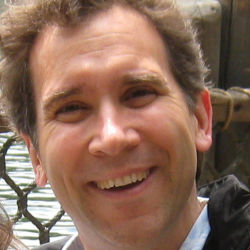
On January 30, U.S. President Obama announced the initiative Computer Science for All (see announcement here). The goal is to give every student an opportunity to learn computer science. His proposed budget is over $4 billion, primarily in the National Science Foundation and Department of Education budgets.
School education in the U.S. is not controlled by the federal government. While the federal government can provide funding, the individual states and territories make decisions about curriculum, teacher certification and professional development, and standards. In the end, only the individual states and territories can realize the goals of Computer Science for All (CSforAll).
Coincidentally, the day after the President’s announcement, a group of state and territory leaders who belong to the Expanding Computing Education Pathways (ECEP) Alliance presented their five-year plans at a meeting near Washington D.C. Leaders from Alabama, California, Connecticut, Georgia, New Hampshire, South Carolina, Maryland, Massachusetts, Puerto Rico, Texas, and Utah described how they plan to grow CS, broaden participation in computing, and develop teachers. These plans give us insight into the progress toward and challenges to achieving CSforAll.
Growing CS
The ECEP cohort is making strides toward making high-school-level CS curricula available in their states and territories: Exploring Computer Science, Computer Science Principles, and Advanced Placement CS Level A, which are being adopted across the US. Alabama was the first state to include CS Principles in its state curriculum. Project Lead the Way is offering professional development and implementing its new computing curricula, but the cost of PLTW may be prohibitive for many schools. Code.org is partnering with selected districts and states including Alabama and Utah to provide teacher professional development and curricula, and is partnering with groups in several other states (including Massachusetts, South Carolina, and Georgia) to provide services like elementary school teacher professional development. States are also defining their own classes. Georgia has created five new CS classes in its state curriculum. With seed funding from ECEP, Puerto Rico has started an ambitious effort to translate Exploring CS into Spanish, and had several teacher leaders attend Explore CS professional development in Chicago.
It’s going to take time to reach CSforAll. Most members of the ECEP cohort expect to offer CS in 30-50% of all high schools in their state within the next five years. Puerto Rico is just introducing Exploring CS into its first schools this year. In several states, the goal is simply to have a single CS teacher in 50% of schools within five years, which is insufficient to provide access to CS education for all students.
Funding is a significant limitation to growing CS in the states and territories. The federal government funds Career and Technical Education (CTE) classes through the Perkins Act. Differences in interpretation of the Perkins Act can limit funding of CS curricula and professional development. Perkins CTE funds are not available for CS education in states and territories where CS is not considered CTE. Some states and districts are debating who may teach CS (CTE teachers, STEM teachers, and/or teachers with other certifications) and whether AP courses can serve as Perkins-required assessments at end-of-pathways. In some states, STEM or CTE teachers are given special incentives, but CS isn’t included in that definition. In Texas, school districts receive additional state funding for student enrolled in CTE classes but most CS courses (including AP CS A and CS Principles), are not under the CTE umbrella. There is a disincentive for schools and districts to invest in building CS course pathways.
States are rapidly developing CS standards, which define learning goals for their students. Massachusetts has released its Digital Literacy and Computer Science standards for comment (see link) with the goal of finalizing state approval in June 2016. Having standards makes it easier to define classes, to create teacher certifications, and to grow teacher professional development programs.
CS is an elective subject in much of the U.S. Over half the states and territories allow CS to count towards some high school graduation requirement (e.g., towards a required number of courses in mathematics, science, or foreign language). Making CS count for high school requirements can be difficult where graduation requirements are decided locally, at the county, district, or school level. California hopes to persuade its university system to value CS in admission decisions, as a way to incentivize student participation in CS classes. Massachusetts is looking to have CS "count" as meeting a mathematics requirement in the recommended MassCORE college and career readiness curricula.
Several states are holding summits to organize efforts around promoting CS education. Maryland has one planned for April 12. These summits have been useful in many states (California, South Carolina, Massachusetts) to create a coherent agenda across legislators, state department of education representatives, higher education, and industry leaders.
Developing Teachers
The greatest barrier to growing CS is growing the number of teachers. Many in the ECEP cohort have CS teacher certifications or are creating them now. These are important to incentivize teachers (because teachers can get a certification for developing CS expertise) and to provide quality CS education (because schools can use certification in selecting teachers). Both Utah and South Carolina are implementing multi-tiered teacher certification systems so that teachers get higher levels of certification with more professional development. In several states, there is resistance to creating yet another teaching credential, with its associated costs.
Making professional development available to teachers is a top priority. Texas is exploring online options to reach their teachers, especially in rural regions. Texas is offering a one-time stipend of $1,000 for teachers who add a CS certification to their professional portfolio. The Hour of Code from Code.org is playing an important role in reaching students, but also teachers. Many teachers have a perception that CS is difficult and requires extensive, expensive training. Hour of Code activities can help change that. Utah’s efforts to grow CS education started with Carl Lyman introducing the Hour of Code to Utah education department staffers, which changed their perceptions of CS.
After developing CS teachers, the challenge is to retain them. Utah is concerned about losing CS teachers to industry or retirement. Alabama has been pleased with retention rates so far, but are concerned about the future. Overall, there is a shortage of teachers in the U.S., and teachers don’t stay in the classroom long. CS teachers may be particularly hard to retain, given the high demand outside the classroom for their computer science expertise.
Broadening Participation
States and territories are looking for strategies to provide computing education to more females, Hispanic/Latino, and Black/African-American students. A first step in many states and territories is simply to create a mechanism to find out who is taking CS in the state. Most education departments/offices track who takes classes in mathematics, science, reading, and other core subjects, but not CS because it hasn’t been a core subject. Several of the ECEP states are changing how they track CS student enrollment. In Connecticut, legislators have just required CS to be part of K-12 curriculum, and now Connecticut is conducting a survey to measure the current status of CS education. States have problems getting schools to appropriately classify ("code") CS classes, using state and/or national course classifications, so that computing courses can be counted and differentiated.
While the goal is CSforAll, the reality will be that CS is most likely to be in the more urban and wealthy schools for several years yet. None of the ECEP cohort expects CS to be in 100% of their schools in five years. South Carolina just completed a "landscape survey." 72% of all CS classes in South Carolina are offered in just the three largest cities, and poorer schools are 21% less likely to have access to computing education. California is now working on its own survey on the landscape of CS education. To reach further, several states are using online classes to provide access to CS education to schools that don’t have a CS teacher.
The goal of broadening participation is about access and success. To broaden participation in computing, we need female and under-represented students to take CS classes and succeed at them. Several states have programs to increase the success rates of female and under-represented minority students in classes like Advanced Placement CS, but that only reaches a small number of students.
More than One President’s Worth
Whoever sits in the President’s chair in 2017 will not see the goals of CSforAll reached, even if the initiative continues to be funded. There’s simply too much ground to cover. Within five years, we may have some CS education in 50% of the schools in the leading states and territories.
The CSforAll initiative is important to fund. There is bipartisan support to promote CS education, as a recent op-ed from Republican and Democratic governors suggests (see link here). Reaching all students will take significant effort on the part of educators, school administrators, business leaders, and state and federal leaders. There is already momentum in the ECEP cohort. A handful of other states are also well positioned to make progress towards achieving CSforAll goals. The announcement of the initiative has already increased awareness of the status of CS education and is moving state, territory, and national leaders to action.
(My thanks to my colleagues Rick Adrion, Sarah Dunton, Barbara Ericson, Renee Fall, and many ECEP cohort leaders for review and contributions to this post.)



Join the Discussion (0)
Become a Member or Sign In to Post a Comment